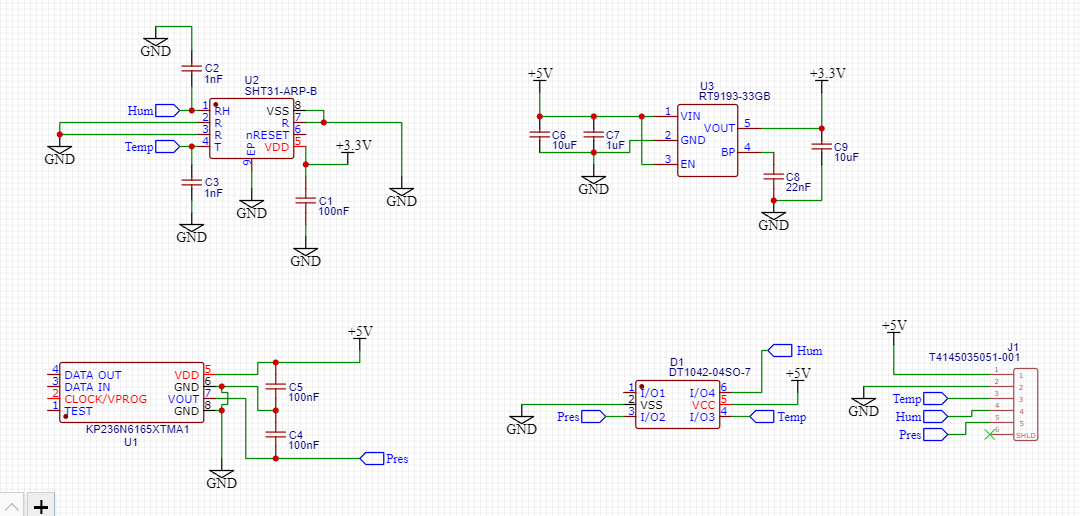I have a KP236N6165XTMA1 5V analog pressure sensor and a SHT31-ARP-B 3.3V analog temperature and humidity sensor on the same circuit, connected to the same ground plane (see v0.2 schematic bellow).
The layout on my PCB looks like this (this is v0.1 which I have been testing on, it had its 3.3V power coming from the connector with an additional pin, but in v0.2 seen in the schematic above, the 5V will be converted to 3.3V directly on the circuit):
If I power both sensors, the temperature and humidity analog outputs are incorrect. For example, the temperature readings are 5-6 degrees celsius (+0.3V) above what they should be.
When I remove the ESD diodes and only power the 3.3V, the 3.3V temperature and humidity sensor gives correct analog outputs, measuring around 20 degrees celsius which is indeed the room's temperature.
When I power back the 5V pin, and thereby the 5V pressure sensor, my temperature readings incrementally increase in the next couple of seconds, reaching 25 or 26 degrees celsius. They then go back to normal readings when I disconnect the 5V.
What could this shift be due to? Is my grounding incorrect? Could my signals be interfering with something? Could there be leakage current from somewhere?


